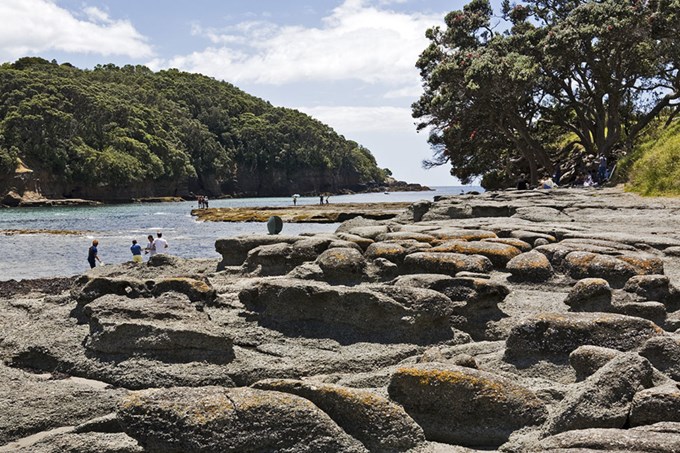Monitoring at Goat Island Marine Reserve shows that numbers of crayfish and snapper are now lower than when the reserve was established in 1975.
Offshore boundary fishing hurting crayfish numbers
Following the creation of the reserve, numbers of crayfish recovered quickly, increasing four-fold in number by the 1990s, with snapper also noticeably bigger and more common.
Scientists have attributed the recovery of seaweed canopies on the reserve’s shallow reefs to the ability of large, resident snapper and crayfish to prey on kelp-eating kina.
But the latest monitoring suggests fishing pressure on the offshore boundary of the reserve for crayfish is so intense that animals that stray outside it are being caught faster than those being able to return.
University of Auckland Senior Lecturer Dr Nick Shears says that while the reserve still has greater numbers, and much larger sized, crayfish and snapper than the surrounding coast, the population sizes are closely linked to the state of the wider fishery.
“To more effectively protect resident animals within their home ranges, the offshore boundary of the Goat Island reserve – and similar-sized reserves at Tawharanui and Hahei – would need to be extended from the current 800 metres to three kilometres offshore,” says Dr Shears.
Results an unwelcome surprise
Hauraki Gulf Forum Chairman John Tregidga said the monitoring analysis had come as a surprise and showed the need for greater integration between fisheries management and marine protection.
“The government’s proposed reform of marine protected areas legislation, its review of the fisheries management system and the current investment in the Sea Change Tai Timu Tai Pari marine spatial planning process give us opportunities to do this.
“Already marine scientists are talking with fishers who have seen their catches in the area decline in recent years.
“Both parties want to enhance fisheries and protect the integrity of the marine reserve. Such conversations are opening up new thinking about how we might manage the gulf into the future.”
Visitors bring benefits to the area
Studies have shown that the more than 350,000 visitors to the Leigh marine reserve each year generate significant economic benefits and jobs in an area that was once primarily a fishing village.
Seafood companies based at Leigh are also recognised for their innovation and deliver premium quality product around the world.
“The current investment in a spatial plan for the gulf and concurrent reviews of fisheries management and marine protection are important and timely,” says John Tregidga.


